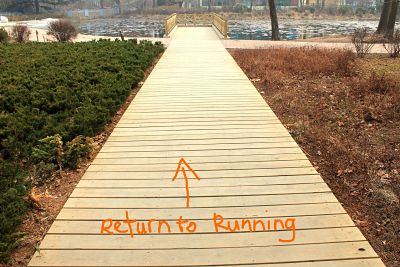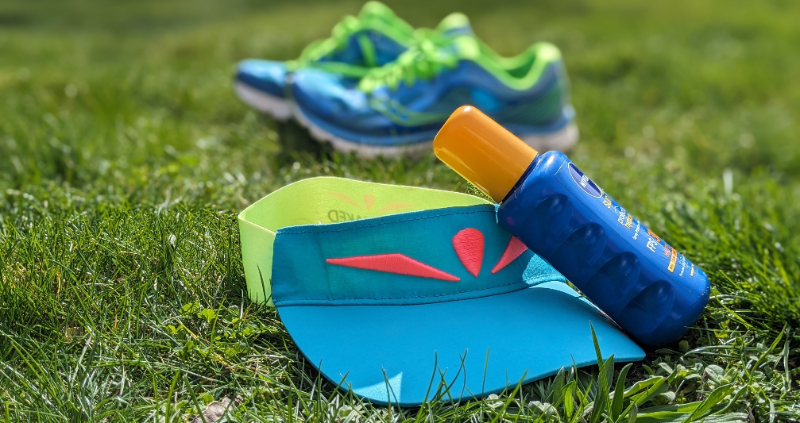How to Start Jogging

You've made the commitment and now you want to know how to start jogging. It sort of sounds easy, after all you learnt to run as a toddler. So why are you suddenly scared and why are you doubting yourself?
Well you'll be happy to know that being cautious is the RIGHT approach in how to start jogging.
Whether you are a total novice or you used to run back in the day, it still pays to ask yourself questions, to look at your body and gauge what it is capable of right now, to assess how you might keep it strong and above all how to avoid injuries.
Did you know that around 8 out of 10 runners will get injured every year. That is HUGE! Don't let that be you.
Let's be positive and work out how to start jogging especially if you've never run in your life (as a sport). By the way, if you haven't run for more than a year then consider yourself a beginner jogger.
How to start jogging in 5 easy steps
I know that you just want to fling on some trainers and go out there and jog (new year resolution and all that), but it is important to think of a few things first. It really doesn't take long but will be worth it.
Check out steps 1 - 4 before launching into step 5, an eight week training plan.
1. Commit
The first step in how to start jogging, is to commit.
Tell yourself, tell your family, tell your friends, find time in your diary and get excited about it. If you don't do that, you are way more likely to only do a couple of sesions and then decide "Oh, too tired today", "Not got time today", " Will start again next week".... and before you know it, your trainers have been relegated to the back of your closet.
Get a jogging buddy too if you can. You will spur each other on and doing it together makes you less self conscious and more accountable.
2. Get an MOT
The next step is to get an MOT. Be honest with yourself and if you are in any doubt about any health issues, get a check up with your doctor. It's not a bad idea anyway, to get a regular checkup as you get older, even if you think that you are in tip top shape.
Let him/her know that you are planning to start jogging. Don't be scared either of them saying that your joints are getting rusty or that your blood pressure is a bit high. That doesn't mean that you can't start running but it is a way of letting you know your capabilities right now.
3. Jogging Kit
So you are excited,committed and passed your health MOT. Most people want to head straight off to buy some running trainers and a whole new outfit. That is great if you can afford to but in fact some of your casual sporty type clothes will do just fine.
However, the most important bit of running kit will be your running shoes. Ordinary casual walking shoes will not do. Here is my advice on choosing the best running shoes for you.
As for what to wear, you want to feel comfortable and to feel unrestricted and you don't want to be too hot or too cold. Some tips of what to wear in hot or cold weather. Plus, us ladies need to make sure that our boobies are supported. Do you need a running bra?
Also don't worry about being overweight or having wobbly bits, as runners come in all shapes and forms. Pat yourself on the back for being active and taking control of your fitness.
4. Warm-Up
Before every jogging session you need to warm up. The reason we warm up, is to get the blood flowing to our muscles, tendons and ligaments so that they loosen up and are ready for action. If you miss this part of your jogging session, then your chances of getting injured and not enjoying your run, go way up.
There is no need to do a boat load of twisty, bendy, slow stretches, but instead, a brisk 10 minute walk swinging your arms is a great start.
Alternatively spend 5-10 minutes doing some dynamic stretches. Dynamic stretches are movements of your muscles but which don't end in with you holding them in a stretched position for a period of time. Examples of dynamic stretches are squats, lunges or leg swings.
5. Time to Jog! - how to start jogging
Planning how to start jogging is easy. Maintaining it is the harder part. However it doesn't have to be hard.
As a beginner, one of the most important factors is not to worry about speed or pace but to think about time on your feet. If you are walking or jogging, it is all good, so long as you are not overdoing it. If you are wondering if walking is as good as running, click here to find out.
A sensible and safe way to approach jogging (remember you don't want to be one of the 8 in 10 who are injured each year), is to gradually increase everything over a period of time and to always have a period of warm up and cool down at the end. This gives your muscles and ligaments, in fact your whole body, time to adjust.
If you're worried about being a slow runner you must read this.
How to Start Jogging - 8 week plan for beginners
Here is a sample 8 week jogging plan. Don't do the sessions back to back but spread them out evenly during the week or never do more than 2 sessions one after the other. Rest days are important for recovery.
Weeks 1 and 2:
Run/walk 3 times a week, 30 minutes per session.
10 minutes warm-up walk + 20 minutes gentle jog (you should be able to talk without getting out of breath) + 10 minutes cool-down walk.
Weeks 3 and 4:
Run/walk 4 times a week, 30 minutes per session or Run/walk 3 times a week, 35 minutes per session.
Some people will find time for 4 sessions but others not. Aim for a minimum of 3 per week. With each session do the same process as in weeks 1 and 2, making sure that you always have a 10 minute warm up and cool down.
Weeks 5 and 6:
Run/walk 4 times a week, 35 minutes per session or Run/walk 3 times a week, 40 minutes per session.
With each session do the same process as in previous weeks. If during the jogging part, you get tired, then either slow right down or take a minute walking break. If you are getting out of breath then you are going too fast so slow right down. Remember there is nothing wrong with walking if you need to.
Weeks 7 and 8:
Run/walk 4 times a week, 40 minutes per session or Run/walk 3 times a week, 45 minutes per session.
By now, you are probably getting into the swing of things and hopefully feeling good and enjoying it. This might be the time to think about joining a club or thinking about doing your local 5km Parkrun.
Remember though, if you have any doubts about your health or are feeling sore bits developing, there is a reason. Don't push yourself and find out what the issue is. As we get older, our bodies are not as elastic as they used to be and they take longer to recover so knowing how to avoid running injuries should always be on your radar.



